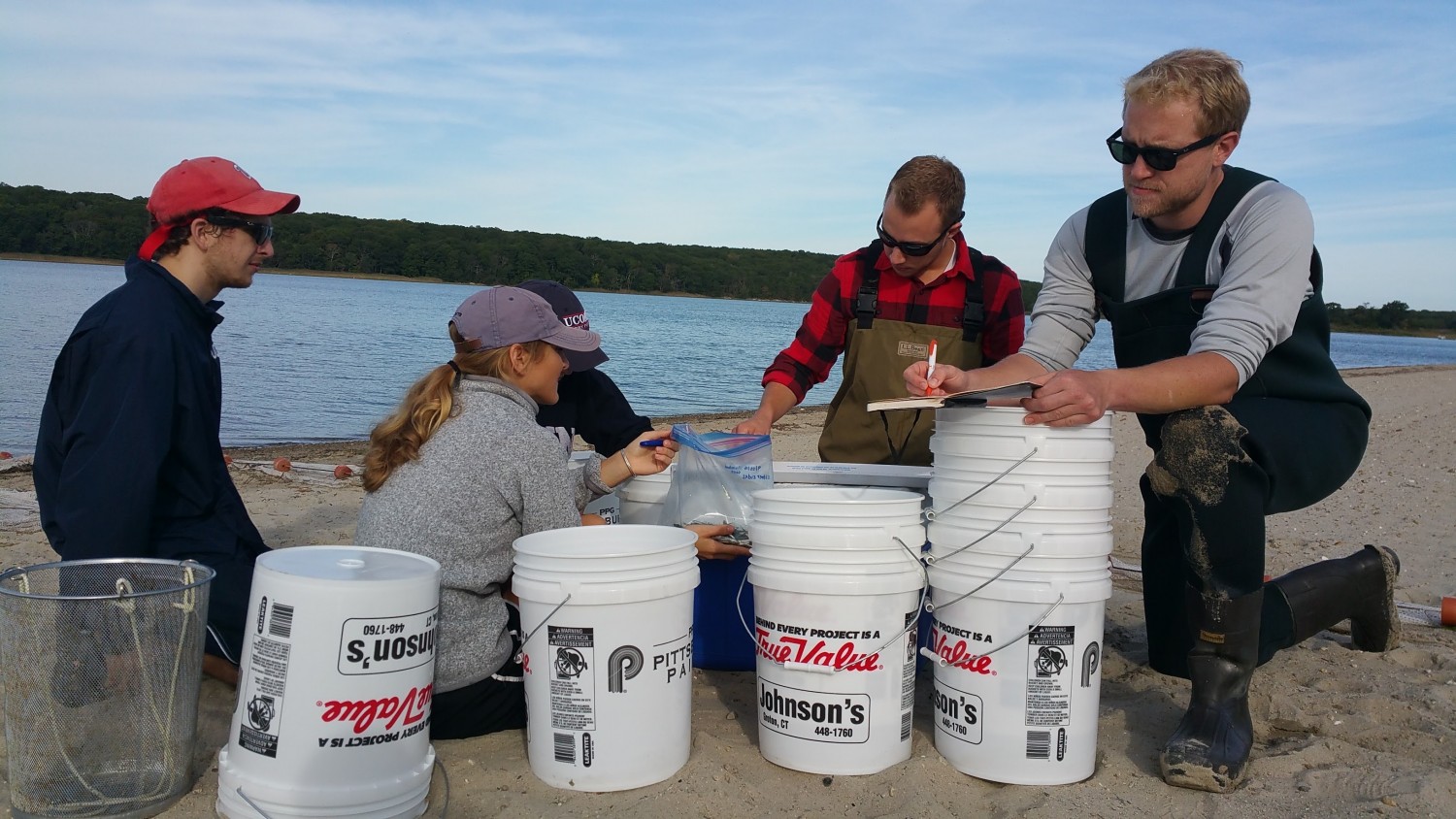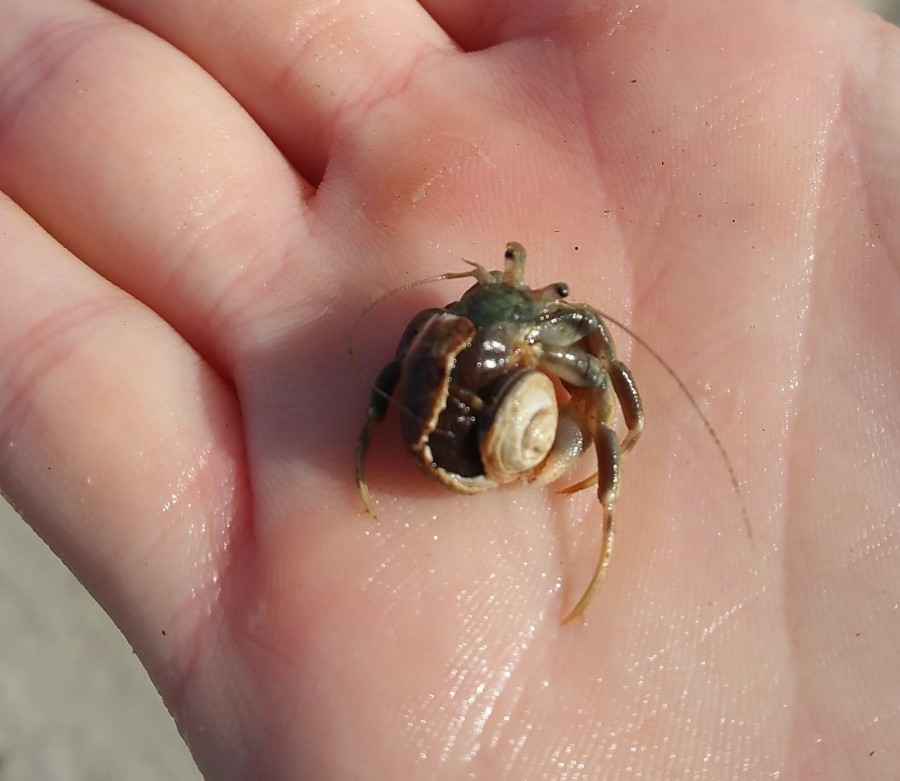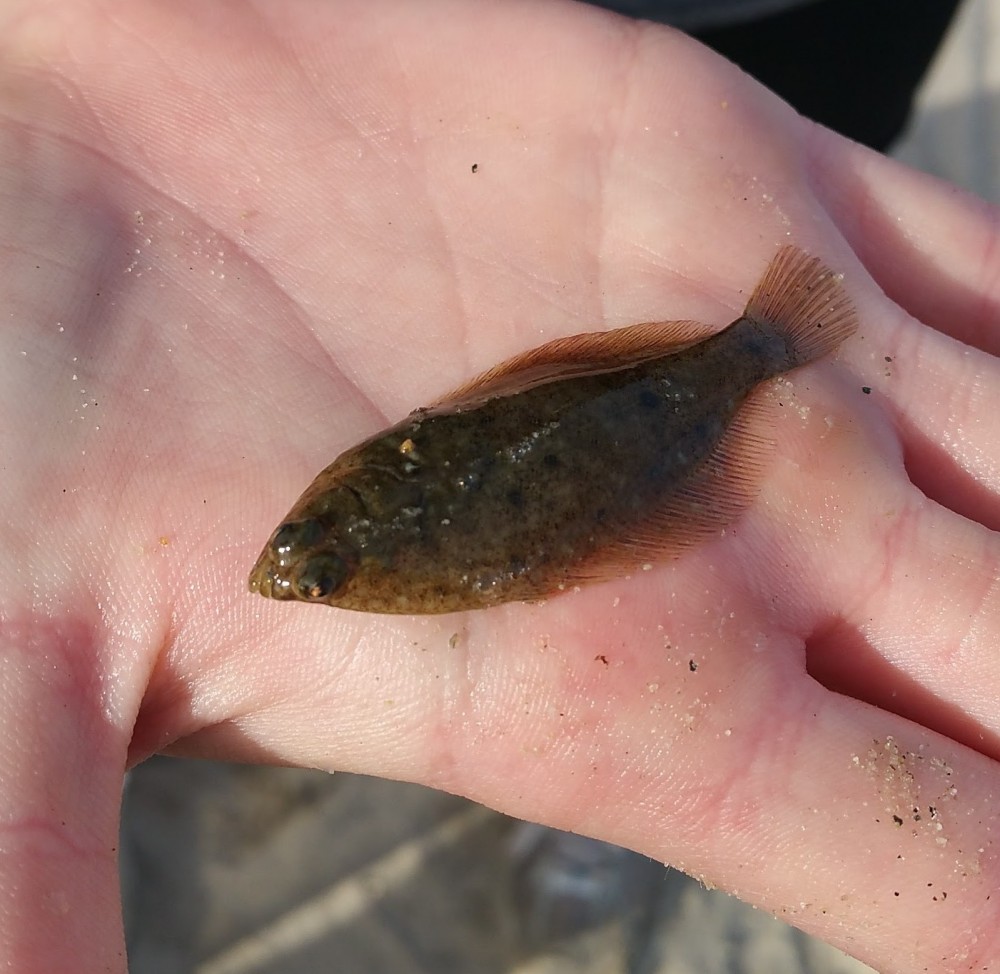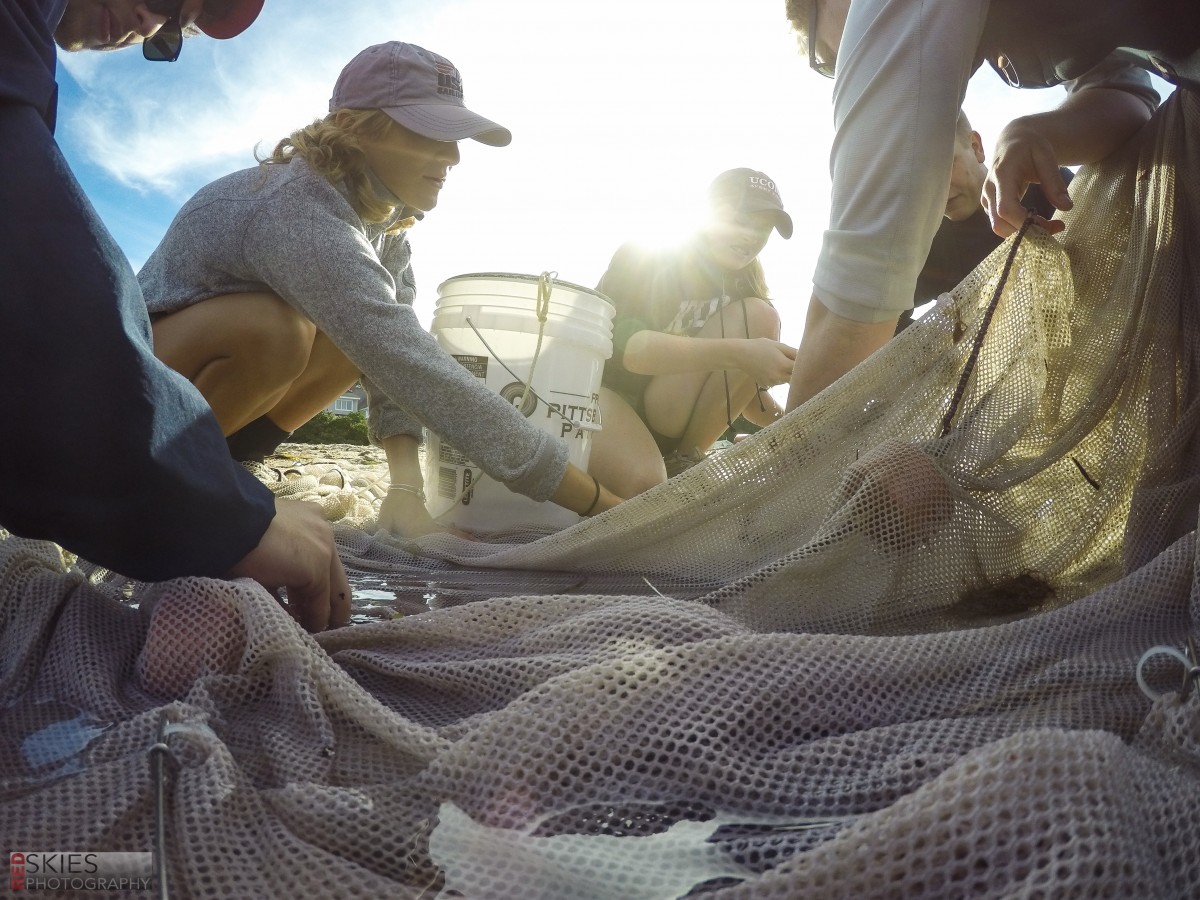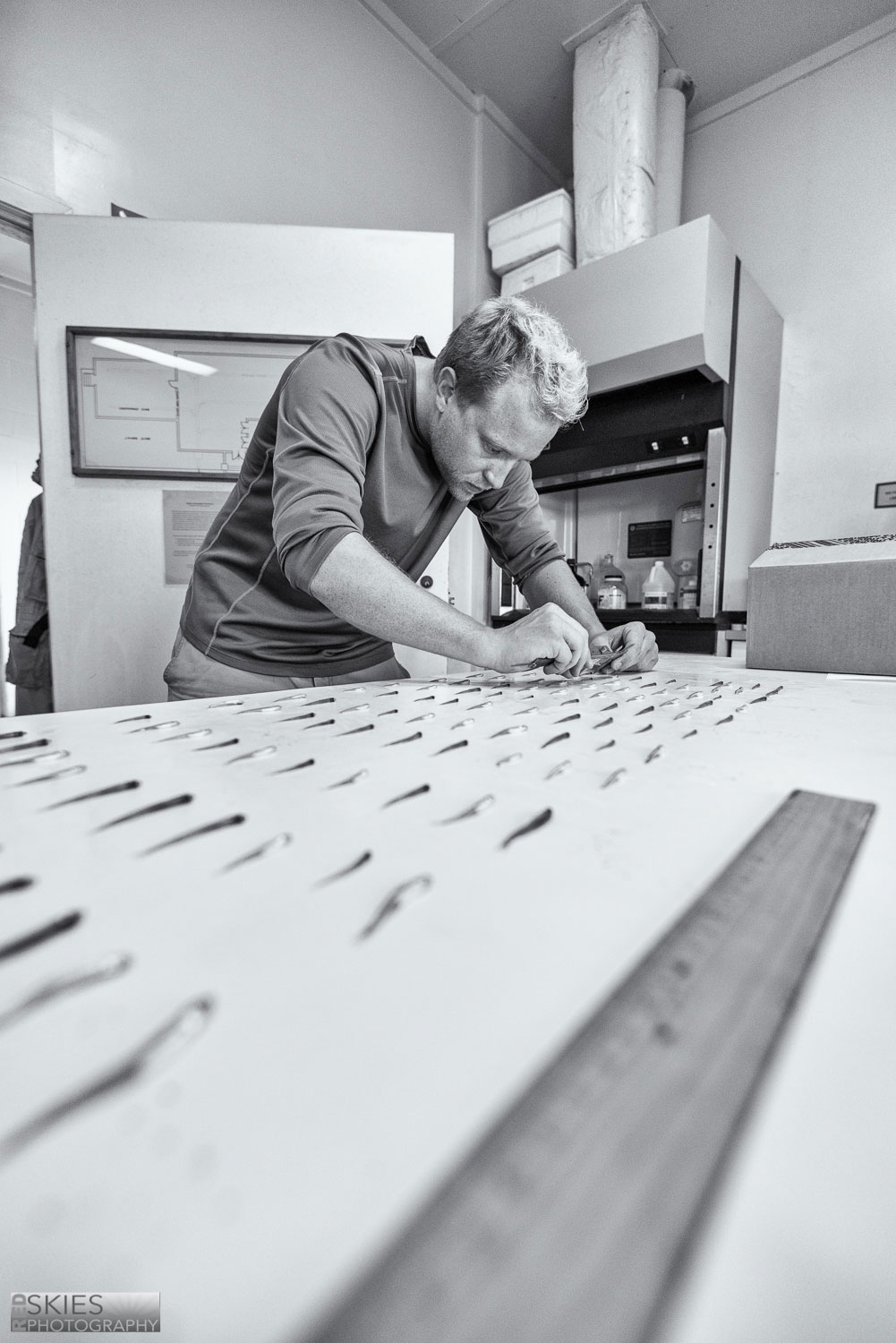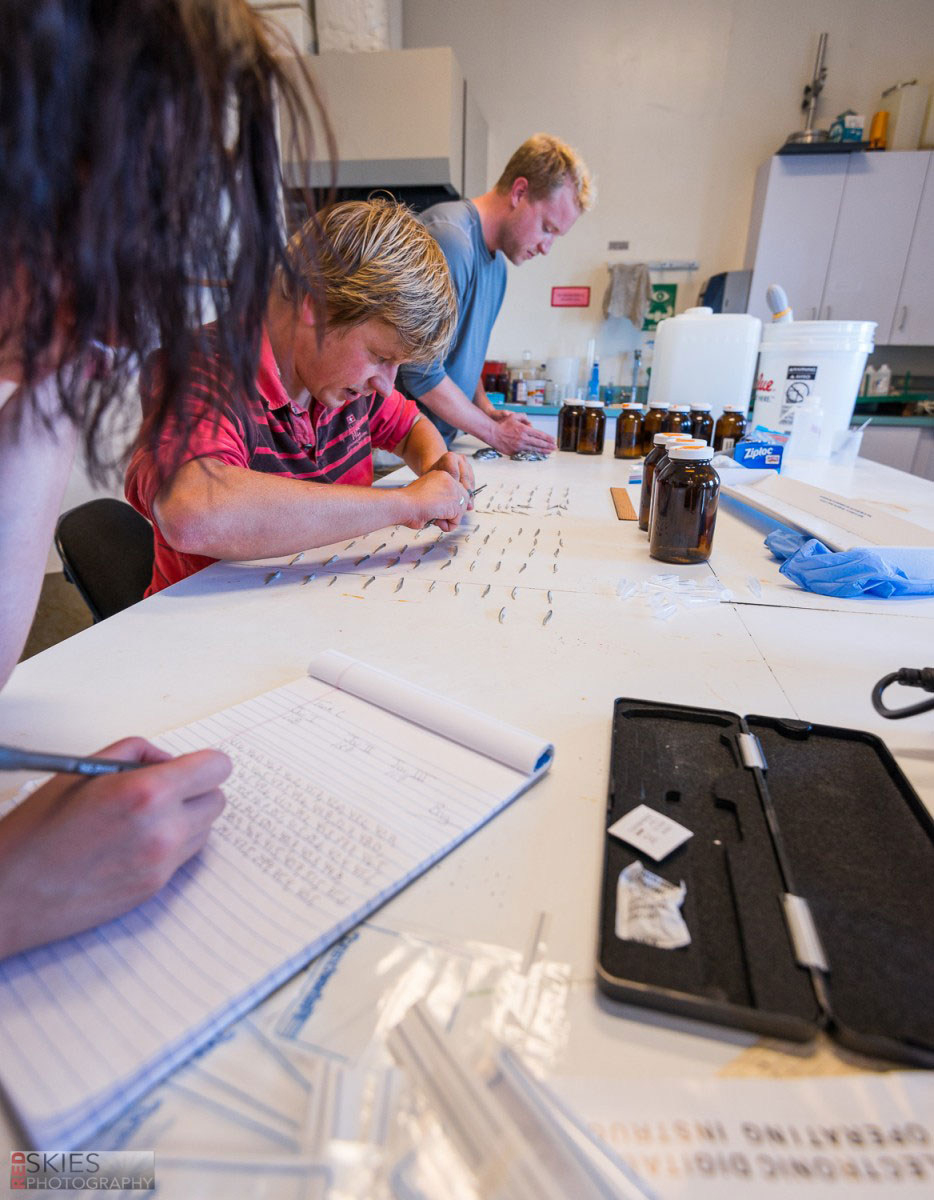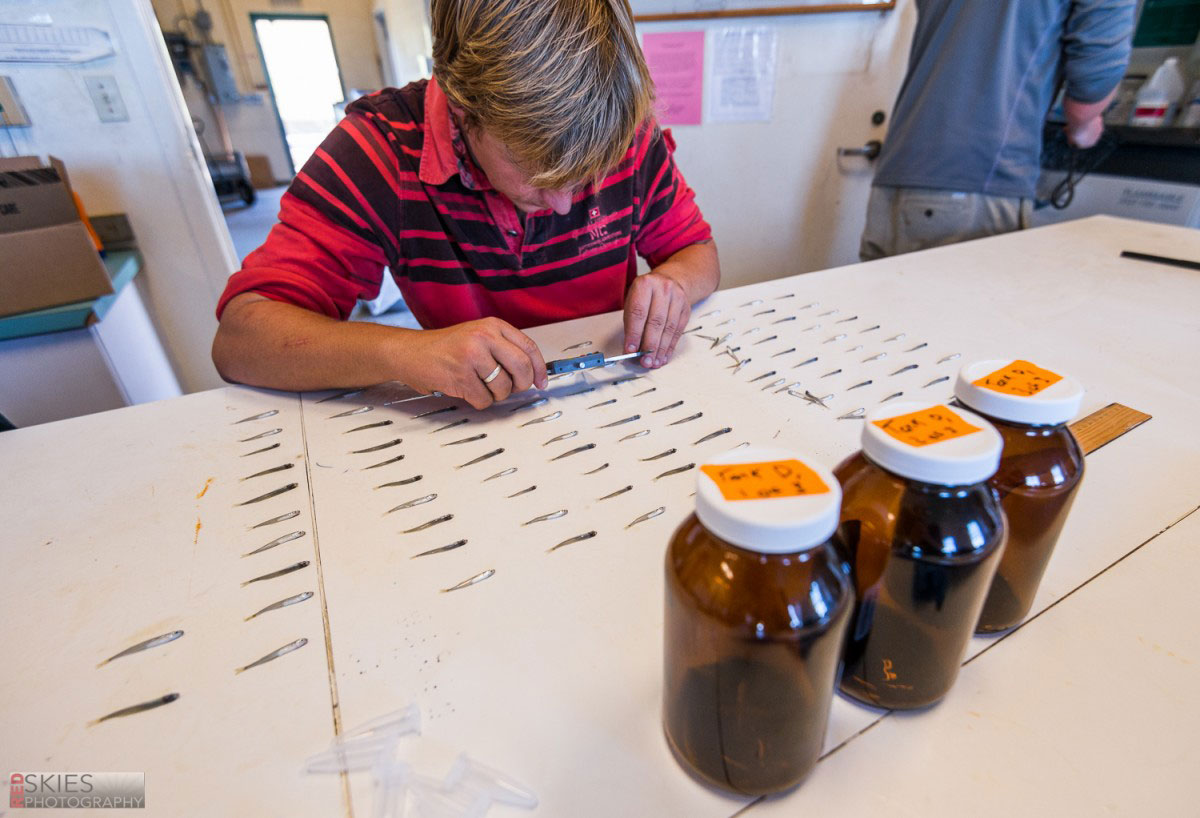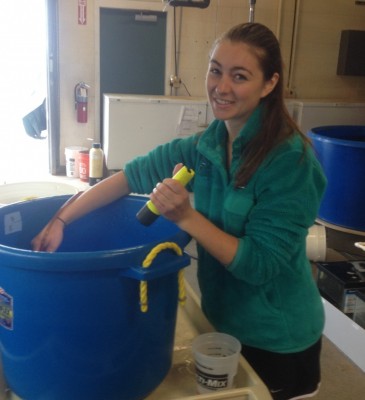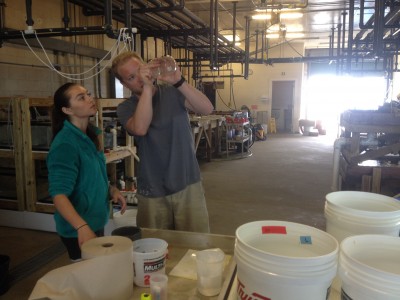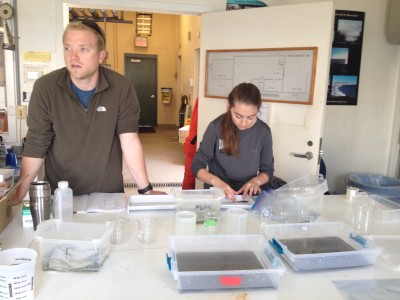On this golden-crisp early fall Friday morning (9-25-15), we went to our favorite spot again – Mumford Cove – to go beach seining. Thanks to the many helping hands – Chris, Jake, Elizabeth, Wes, Megan, and Hannes – we hand a ton of fun, while seeing a very diverse catch, among of course our target species – Atlantic silverside juveniles. These were measured on the beach and then preserved, and will ultimately become part of a larger study of the seasonal characteristics of survivors.
However, have you ever wondered what it must be like for fish to get caught in a beach seine. Well, thanks to Jake’s new GoPro and his ingenuity tethering it to the bag of the seine, here’s a glimpse (in HD). Enjoy!
